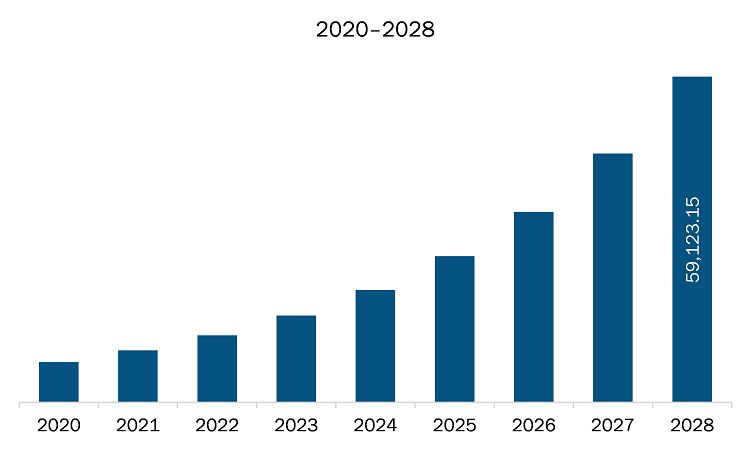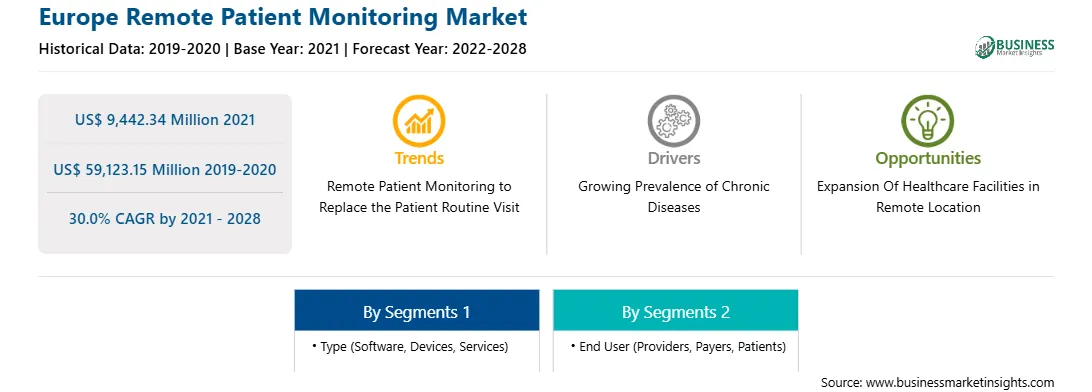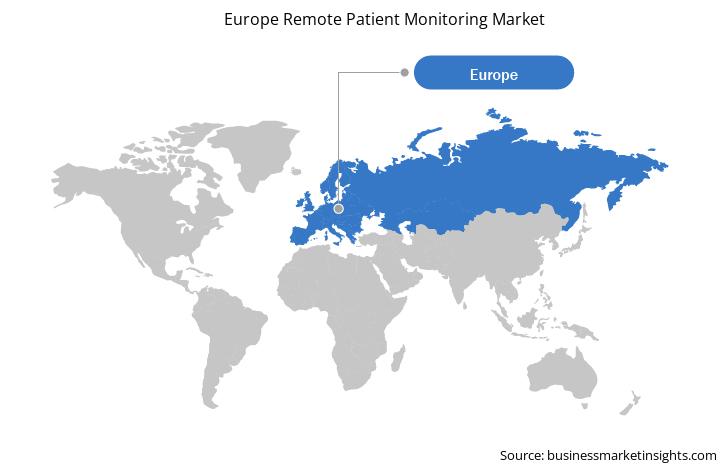Europe region includes France, Germany, Italy, Spain, United Kingdom, and rest of Europe. The UK is expected to witness significant growth during the forecast period. In the United Kingdom, as part of the National Health Service’s (NHS) Long Term Plan, Digital projects are being evaluated for future integration into the current national health care system, and primary care services are at the forefront of this movement. This could save the NHS around US $1.35 billion in new investment each year by reducing patient visits to the hospital by almost 30 million in each year. Although remote patient monitoring (RPM) has traditionally been used to control chronic diseases like diabetes and perioperative care, it is now being used in other areas as well. The United Kingdom embraced telemedicine in the early 1990s, and the industry has grown steadily since then. The increased need to monitor patients and treat them for chronic illnesses from remote locations will propel the telemedicine market in the United Kingdom forward. RPM's expansion to a broader range of patients will provide further benefits to both health care providers and patients
The European region is highly affected by the outbreak of the COVID-19 pandemic. Countries like Italy, Spain, the UK, Germany, France, and other European counties such as Russia, Switzerland are highly affected. Most of the deaths were registered in these countries in the initial phases of the pandemic onset. The European countries are currently facing the second wave of the pandemic. Therefore, to control the spread of coronavirus, governments of various countries have implemented lockdown. Reliable and timely COVID-19 observation of vital signs is an integral part of the monitoring, prevention, touch recording, and control of infections, and clinical management of COVID-19. For instance, an ERDF-funded project is helping to tackle the COVID-19 crisis in Italy. New sensing devices created by the MEDIWARN project allow healthcare staff to monitor patients suffering from the disease at a distance. The remote patient monitoring solutions can monitor a patient’s vital signs such as heartbeat, respiratory rate, blood pressure and body temperature. It is difficult and dangerous for medical and nursing staff to monitor COVID-19 patients in person. Patients infected and symptomatic need to be isolated in rooms with negative pressure. The new and advanced devices allow staff to monitor such patients more easily from another room. Thus, COVID-19 pandemic resulted in increasing demand of healthcare monitoring and awareness boosting the remote patient monitoring market in the forecasted period.

Strategic insights for the Europe Remote Patient Monitoring provides data-driven analysis of the industry landscape, including current trends, key players, and regional nuances. These insights offer actionable recommendations, enabling readers to differentiate themselves from competitors by identifying untapped segments or developing unique value propositions. Leveraging data analytics, these insights help industry players anticipate the market shifts, whether investors, manufacturers, or other stakeholders. A future-oriented perspective is essential, helping stakeholders anticipate market shifts and position themselves for long-term success in this dynamic region. Ultimately, effective strategic insights empower readers to make informed decisions that drive profitability and achieve their business objectives within the market.

| Report Attribute | Details |
|---|---|
| Market size in 2021 | US$ 9,442.34 Million |
| Market Size by 2028 | US$ 59,123.15 Million |
| Global CAGR (2021 - 2028) | 30.0% |
| Historical Data | 2019-2020 |
| Forecast period | 2022-2028 |
| Segments Covered |
By Type
|
| Regions and Countries Covered | Europe
|
| Market leaders and key company profiles |
The geographic scope of the Europe Remote Patient Monitoring refers to the specific areas in which a business operates and competes. Understanding local distinctions, such as diverse consumer preferences (e.g., demand for specific plug types or battery backup durations), varying economic conditions, and regulatory environments, is crucial for tailoring strategies to specific markets. Businesses can expand their reach by identifying underserved areas or adapting their offerings to meet local demands. A clear market focus allows for more effective resource allocation, targeted marketing campaigns, and better positioning against local competitors, ultimately driving growth in those targeted areas.

The remote patient monitoring market in Europe is expected to grow from US$ 9,442.34 million in 2021 to US$ 59,123.15 million by 2028; it is estimated to grow at a CAGR of 30.0% from 2021 to 2028. It is anticipated that efficient remote healthcare may reduce the number of routine checkups before or after visiting a healthcare professional. Also, the patients would be permitted to leave the clinic or hospital earlier as the healthcare professionals will be enabled to monitor the patients from their home rather than admitting them in the hospital for further observation. For instance, in 2018, Britain’s National Health Service announced their Test Bed Programme, in which Type 1 or Type 2 diabetic patients were to be experimented with health technology allowing them to self-manage their conditions by staying at home. This helps in decreasing the additional costs required for staying in hospitals, thereby decreasing the overall medical expenditure of the individuals. Also, the improved internet connectivity and decreasing internet costs particularly in developing nations, are the major factors for the growth of the remote patient monitoring devices market.
In terms of type, the devices segment accounted for the largest share of the Europe remote patient monitoring market in 2021. In term of end user, provider segment held a larger market share of the remote patient monitoring market in 2021.
A few major primary and secondary sources referred to for preparing this report on the remote patient monitoring market in Europe are company websites, annual reports, financial reports, national government documents, and statistical database, among others. Major companies listed in the report are Koninklijke Philips N.V.; Nihon Kohden Corporation; Medtronic; General Electric; Cerner Corporation; Siemens Healthineers AG; Boston Scientific Corporation; Omron Healthcare; and Abbott among others.
The Europe Remote Patient Monitoring Market is valued at US$ 9,442.34 Million in 2021, it is projected to reach US$ 59,123.15 Million by 2028.
As per our report Europe Remote Patient Monitoring Market, the market size is valued at US$ 9,442.34 Million in 2021, projecting it to reach US$ 59,123.15 Million by 2028. This translates to a CAGR of approximately 30.0% during the forecast period.
The Europe Remote Patient Monitoring Market report typically cover these key segments-
The historic period, base year, and forecast period can vary slightly depending on the specific market research report. However, for the Europe Remote Patient Monitoring Market report:
The Europe Remote Patient Monitoring Market is populated by several key players, each contributing to its growth and innovation. Some of the major players include:
The Europe Remote Patient Monitoring Market report is valuable for diverse stakeholders, including:
Essentially, anyone involved in or considering involvement in the Europe Remote Patient Monitoring Market value chain can benefit from the information contained in a comprehensive market report.